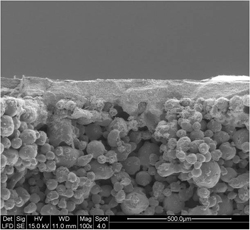Toward complete conversion of hydrogen to electricity
Solid oxide fuel cells (SOFCs) use a solid ceramic as the electrolyte (conductive medium). They are promising devices for converting fuel to electricity through electrochemical rather than combustion processes. However, their efficiency and stability are limited by several factors. Proton-conducting SOFCs or proton ceramic fuel cells (PCFCs) use a proton-conducting electrolyte instead of an oxide ion conductor and have the theoretical potential for 100 % fuel utilisation. However, the poor stability, sinterability, and DC proton conductivity of candidate electrolytes have constituted a barrier to commercial development. Scientists initiated the EU-funded project 'Efficient and robust fuel cell with novel ceramic proton conducting electrolyte' (EFFIPRO) to employ novel more stable electrolyte materials including lanthanum niobium oxide (LaNbO4) to enhance overall PCFC performance. A rigorous research programme led to the identification of a new class of stable proton conducting ceramics – lanthanum tungsten oxides (LWO) – as the best proton conductors. Scientists used pulsed laser deposition (PLD) to make an LWO electrolyte with a porous metallic alloy support and strontium-doped lanthanum chromite (LSC) functional anode. This was the first third-generation PCFC structure ever reported and a patent has been filed. PCFCs are likely to play a major role in future energy policies given their potential for high efficiencies and intermediate temperature operation. EFFIPRO has made first steps in this direction based on novel materials classes and has identified problems and solutions related to the application of thin film electrolytes and compatible electrode structures.







